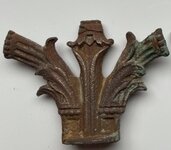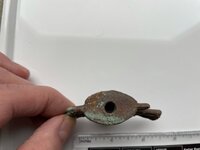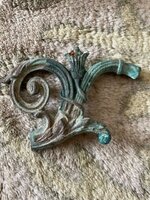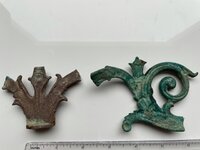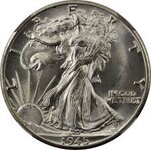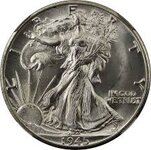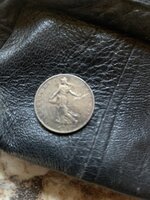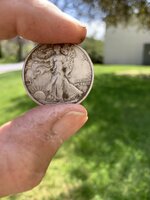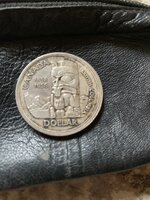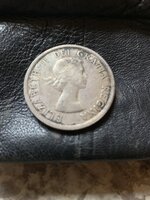FindingHistory
Member
Hi everyone,
Found this thick cast brass/bronze finial and matching decorative piece just a few yards away from a War of 1812 tavern site, maybe 10" deep near a very small stream. I cleaned them up a little bit with soaking them in vinegar and a brush. I think they are probably from a wall sconce candelabra or mirror, or maybe a fireplace insert. They definitely have a front side with a detailed design and a back side that isn't as detailed (back view in the picture with the 2 pieces side by side), so it makes me think that the back side would've been right up against the wall like a sconce for candles.
When I first found these, I thought that maybe they were a furniture piece from a reproduction from 1920s or later, but now that I think about the depth that I found them, the level of thick crusted green patina that was on them & I had to clean off, the thickness and heaviness of their casting, and the close proximity to all the late 1700s-mid 1800s stuff that I found at this site, I think otherwise.
Does anyone know what design this is, like is it Federal Period or Georgian or Neoclassical or something else? I'm trying to figure out whether this design is consistent with 1790s/first decade of 1800s/1812 era or if it is maybe like the 1820s-30s-40s. Thanks in advance if anyone knows! HH
Found this thick cast brass/bronze finial and matching decorative piece just a few yards away from a War of 1812 tavern site, maybe 10" deep near a very small stream. I cleaned them up a little bit with soaking them in vinegar and a brush. I think they are probably from a wall sconce candelabra or mirror, or maybe a fireplace insert. They definitely have a front side with a detailed design and a back side that isn't as detailed (back view in the picture with the 2 pieces side by side), so it makes me think that the back side would've been right up against the wall like a sconce for candles.
When I first found these, I thought that maybe they were a furniture piece from a reproduction from 1920s or later, but now that I think about the depth that I found them, the level of thick crusted green patina that was on them & I had to clean off, the thickness and heaviness of their casting, and the close proximity to all the late 1700s-mid 1800s stuff that I found at this site, I think otherwise.
Does anyone know what design this is, like is it Federal Period or Georgian or Neoclassical or something else? I'm trying to figure out whether this design is consistent with 1790s/first decade of 1800s/1812 era or if it is maybe like the 1820s-30s-40s. Thanks in advance if anyone knows! HH

